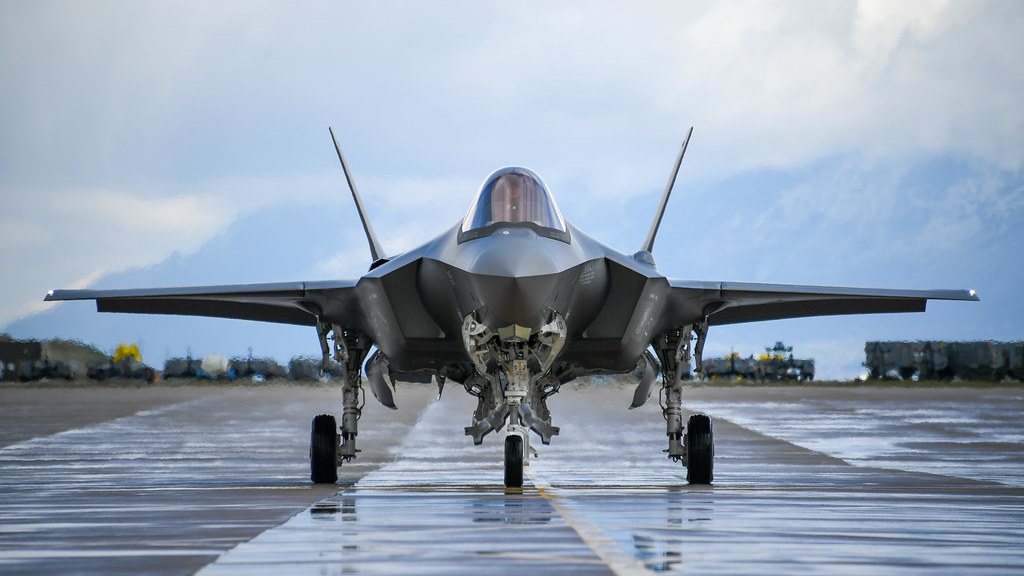
The ongoing conflict in Ukraine and the insights from military strategists regarding future warfare underscore the significant role of unmanned aerial vehicles (UAVs). These drones are increasingly favored due to their efficiency and ability to preserve human lives.
Given this context and the evolution of combat aircraft in recent years, it’s logical to question the future of military operations. One such question is whether Lockheed Martin’s F-35 could be transformed into a remotely piloted aircraft.
In today’s world, military engineers have shown us that nearly anything is conceivable. But is it practical? Let’s delve deeper into this concept.
The Lockheed Martin F-35 fighter jet was initially designed to be human-operated. However, American engineers have cleverly left a “hidden yet accessible pathway” for the potential conversion of the F-35 into a drone.
Take the F-16 as an example. It was designed as a manned aircraft and cannot be remotely operated. Yet, the Air Force is repurposing its older F-16s for remote operation as aerial targets, a role previously filled by the F-4. This transformation required significant modifications to the F-16’s original design.
To convert the F-35 into a remotely piloted aircraft (RPA), several critical alterations would be necessary. A key modification would be the installation of a robust and reliable communication system for seamless remote control of the aircraft.
This would necessitate integrating advanced communication circuits and technologies capable of transmitting and receiving real-time data, commands, and video feeds. Furthermore, existing flight control systems in the F-35 would need to be adapted to accommodate remote control inputs, which would entail modifying the aircraft’s avionics and flight control software.
Another vital component of transforming the F-35 into an RPA would be incorporating autonomous capabilities. This would require upgrading onboard systems to enable the aircraft to perform various tasks without constant human intervention.
For instance, equipping the F-35 with advanced sensors like radar and cameras would provide situational awareness and enable independent decision-making based on environmental conditions. Additionally, enhancements to navigation and guidance systems would be necessary to support autonomous flight and mission execution.
The F-35’s current cockpit would need substantial alterations to facilitate remote piloting. Physical controls such as the joystick and throttle would need to be substituted with electronic interfaces for remote operation. This would entail a redesign of the cockpit layout and the integration of new control systems that can accurately convert pilot inputs into aircraft commands. Additionally, the cockpit would need advanced displays and interfaces to provide the remote pilot with essential flight data and situational awareness.
In terms of cybersecurity, transforming the F-35 into an RPA would require robust security measures to safeguard the aircraft from potential cyber threats. This would involve fortifying the aircraft’s communication systems against hacking or unauthorized access, and hardening onboard systems and software to eliminate potential vulnerabilities that could be exploited by malicious actors. Cybersecurity is a critical aspect of the modification process to ensure the safe and secure operation of the remotely piloted F-35.
While anything is possible, it doesn’t necessarily mean it’s necessary. The short answer is no – the F-35 should not be remotely piloted. Here’s why:
Remotely controlled aircraft are vulnerable to enemy electronic warfare measures. Jamming the radio frequency transmission can compromise the aircraft. This risk might be acceptable for a cheaper drone, but not for a 5th generation fighter like the F-35, which currently costs 78 million per aircraft.
The day will likely come when planes will not be remotely piloted, especially expensive ones. Instead, the plane’s internal AI will fly itself and decide when to engage.
The internal AI of the aircraft, also known as the Artificial Intelligence Processor (AIP), is a crucial component of the aircraft’s advanced avionics system. It processes vast amounts of data collected from various sensors and systems onboard the aircraft.
The AIP uses advanced algorithms and machine learning techniques to analyze this data and make informed decisions in real time. These decisions can range from optimizing flight performance to identifying and prioritizing targets for engagement.
The functions of the internal AI in the aircraft are multi-faceted. One of its primary functions is to assist the pilot in situational awareness by providing real-time information about the aircraft’s surroundings, including threats, friendly forces, and mission objectives.
The AI helps the pilot make sense of complex and rapidly changing scenarios, enabling faster and more effective decision-making. Additionally, the internal AI also plays a crucial role in managing and coordinating the various systems and subsystems of the aircraft, ensuring optimal performance and mission success.
In response to electronic jamming or electronic warfare (EW) threats, the aircraft’s internal AI employs a series of defensive strategies. It uses sophisticated electronic warfare systems to detect and identify electronic threats such as radar jamming or communication interference.
Upon identifying a threat, the AI can dynamically adjust the aircraft’s electronic countermeasures to disrupt or deceive the adversary’s electronic systems. These countermeasures can encompass jamming the jammer, emitting false signals, or swiftly changing frequencies to evade detection and tracking.
Moreover, the aircraft’s internal AI is designed to adapt and learn from new electronic warfare tactics and threats. It can analyze patterns and behaviors of enemy electronic systems to predict their next move and devise effective countermeasures.
This adaptive capability allows the aircraft to stay ahead of emerging electronic warfare technologies and maintain its effectiveness in hostile environments.




